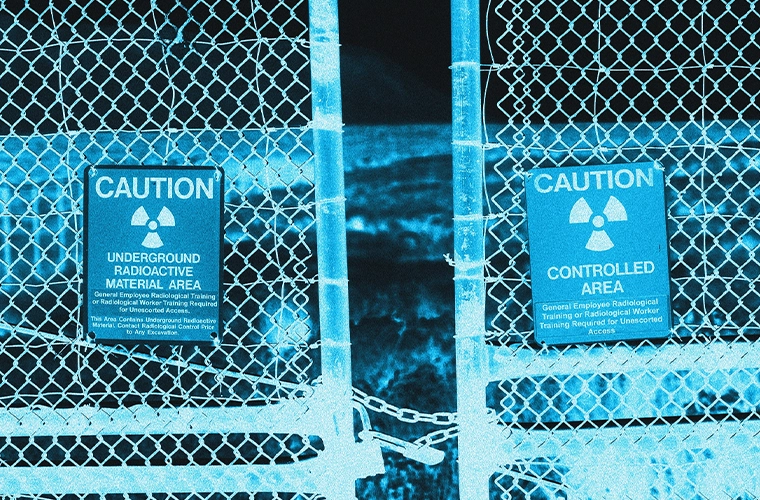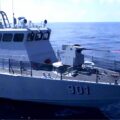When it comes to uncovering hidden nuclear threats, the U.S. Defense Advanced Research Projects Agency (DARPA) is turning to what might best be described as quantum magic. The Pentagon’s blue-sky research arm believes that the strange physics once confined to the lab could soon help it see what others can’t—literally.
In a Request for Information (RFI) recently released by the Defense Sciences Office (DSO), DARPA announced it is seeking scientists’ help in reinventing one of the most complex challenges in national security: detecting hidden nuclear material. This effort utilizes a technique, known as ghost imaging, which originates from the realm of quantum physics.
If successful, the effort could usher in a new era of nuclear detection technology that can “see” through shielding, detect fissile materials from a distance, and do it all while minimizing radiation exposure.
The RFI invites researchers to explore “the development of novel active nuclear interrogation techniques” that rely on “correlated particles (neutrons, gamma ray photons, and others) in variations of classical, quantum, and computational Ghost Imaging (GI).”
In essence, DARPA is asking whether the same physics that allow photons to remain mysteriously connected across vast distances—a hallmark of quantum entanglement—can peek inside sealed containers, trucks, or even underground facilities without physically opening them?
“GI provides potential performance advantages when integrated with active interrogation such as dose minimization, enhanced Signal-to-Noise Ratios (S/N), and increased standoff distances,” the recent DARPA release reports.
Traditional “active interrogation” techniques—used to detect nuclear, chemical, or radiological materials—typically involve bombarding an object with neutrons or gamma rays and analyzing the resulting radiation signatures.
These systems can be powerful but often carry risks. Specifically, they can expose operators and nearby personnel to radiation, require close-range inspection, and struggle to distinguish between benign and threatening materials.
Ghost imaging, however, flips that paradigm. Instead of forming an image directly from reflected light or radiation, it uses correlations between two separate beams—one that interacts with the object and another that doesn’t—to reconstruct an image indirectly. In some setups, the beam that “sees” the object never even touches it.
In quantum ghost imaging, those correlations can even exist between entangled particles. These are pairs of particles that exchange information instantaneously, regardless of the distance between them. DARPA’s new RFI suggests that such techniques could radically improve the precision, safety, and range of nuclear detection systems.
For years, ghost imaging has been a fascinating topic in physics research and demonstrated in laboratory experimentsinvolving entangled photons. By measuring the subtle correlations between these linked particles, researchers have been able to reconstruct images of objects that only one particle ever interacted with—even when the detector itself never directly “sees” the object at all.
By releasing this new RFI, DARPA signals its belief that this principle extends beyond the laboratory—and into real-world applications.
The agency points to recent progress in the field of ghost imaging, noting that “over the past 20 years, researchers have developed GI techniques using correlations in both classical light and quantum entangled optical photons.” DARPA also acknowledges newer demonstrations of “GI with x-rays, electrons, and neutrons,” suggesting that the concept is already expanding beyond the realm of light.
“Laboratory technology has demonstrated these foundational aspects and shows potential to disrupt conventional active nuclear interrogation in the future by extending laboratory experiments to field-deployable GI interrogation systems,” DARPA writes.
Taken together, these statements make it clear that DARPA views ghost imaging as far more than a scientific curiosity. Instead, the agency sees it as a potential cornerstone of next-generation nuclear security systems.
In keeping with its tradition of pursuing high-risk, high-reward research, DARPA is not interested in baby steps. The RFI explicitly calls for submissions that go beyond “incremental improvements” and instead seek to “shape the future of R&D initiatives, including potential high-risk, high-reward concepts and research directions towards performance demonstrations.”
Towards this goal, DARPA is asking respondents to propose ways to achieve measurable leaps in performance, such as a 10x increase in Signal-to-Noise Ratios (S/N) or significant gains in resolution, specificity, and standoff distance.
In its Scope of Interest, the agency highlights several areas where major innovation is needed. First, DARPA is seeking ways to generate correlated or even entangled particles—such as neutrons, x-rays, and gamma rays—that could serve as the foundation for ghost imaging–based interrogation systems.
The agency is also seeking new types of detectors, ranging from advanced imaging arrays to ultra-sensitive single-pixel devices, designed specifically to capture the faint signatures that such systems would rely on.
Finally, DARPA emphasizes the importance of computational breakthroughs, including artificial intelligence and machine learning techniques, that could rapidly reconstruct images or simulate complex particle interactions with unprecedented speed and accuracy.
The agency even highlights the emerging field of computational ghost imaging, a sub-discipline that merges physics and data science.
“DARPA seeks input on potentially disruptive computational methods, including computational ghost imaging that can be adapted to transform active nuclear interrogation capabilities,” the RFI reads.
In other words, DARPA is suggesting that the future of nuclear detection won’t hinge solely on improved detectors or radiation sources. It may just as much depend on smarter algorithms—systems capable of uncovering meaningful patterns hidden within noisy, indirect data.
The implications of this research stretch far beyond the national security world. Ghost imaging, if perfected, could lead to a revolution in non-invasive scanning technologies.
Imagine airport security scanners that could detect threats without exposing passengers to radiation, or cargo inspection systems that could see through metal containers from a safe distance.
In medicine, similar principles may one day enable ultra-low-dose imaging of tissues or organs, revealing structures that conventional X-rays miss. Likewise, planetary science could benefit from neutron or gamma-based ghost imaging to help spacecraft detect subsurface materials on other worlds without the need for drilling.
For now, though, DARPA’s focus remains firmly on nuclear security—specifically, on advancing the ability to detect concealed nuclear threats.
Of all the challenges outlined in the RFI, generating the right kind of particles might be the most daunting. The agency specifically mentions an interest in “the generation of correlated and/or entangled neutrons, gammas (x-rays), and other particles for use in active nuclear interrogation.”
While entangled photons are routinely produced in laboratories, entangled neutrons or gamma rays represent the bleeding edge of quantum science. Achieving such correlations requires precise control over particle sources and detection systems—often at energy scales that make even small experiments difficult and expensive.
Yet DARPA seems to believe it is possible. By combining classical and quantum methods and by leveraging the latest advances in AI-driven reconstruction algorithms, the agency believes the barriers to real-world ghost imaging can be overcome.
Physicists have long been fascinated by the mystery of ghost imaging—how two seemingly independent particles can work together to create an image that neither could produce on its own. DARPA’s latest initiative suggests that these once-esoteric experiments are now being reimagined as the foundation for real-world defense technology.
If successful, the result could be a kind of holy grail for nuclear detection: a system capable of identifying hidden fissile material with pinpoint accuracy, minimal risk, and possibly even from hundreds of meters away.
The RFI invites researchers from across academia, government, and industry to submit their ideas—classified or unclassified—by December 8, 2025.
The agency stresses that its current interest in ghost imaging is exploratory. However, history shows that these types of early calls can often mark the first step toward groundbreaking programs.
Whether through entangled particles, AI-driven reconstruction, or some yet-unimagined method, DARPA’s latest inquiry reflects an intriguing ambition to transform what once seemed like quantum magic into a practical tool for national security.
Tim McMillan is a retired law enforcement executive, investigative reporter and co-founder of The Debrief. His writing typically focuses on defense, national security, the Intelligence Community and topics related to psychology. You can follow Tim on Twitter: @LtTimMcMillan. Tim can be reached by email: tim@thedebrief.org or through encrypted email: LtTimMcMillan@protonmail.com

